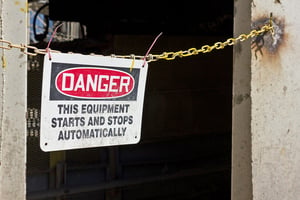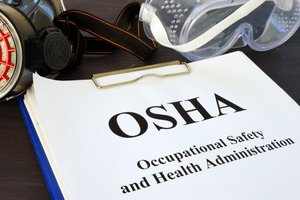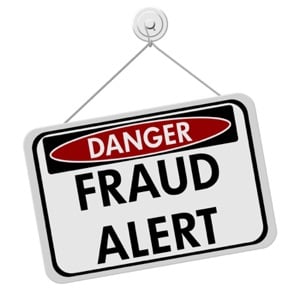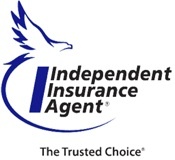 Since the passing of the Pennsylvania Workmen’s Compensation Act in 1915, most contractors with employees are required to have Workers’ Compensation Insurance by law. The purpose of Workers’ Compensation insurance is to protect both employee and employer when an employee is injured on the job - regardless of who is at fault.
Since the passing of the Pennsylvania Workmen’s Compensation Act in 1915, most contractors with employees are required to have Workers’ Compensation Insurance by law. The purpose of Workers’ Compensation insurance is to protect both employee and employer when an employee is injured on the job - regardless of who is at fault.
Workers’ Comp covers medical costs, disability payments, death benefits, and lost wages to the injured employee and protects employers from direct lawsuits by injured employees. Failure to have Workers’ Comp Insurance can lead to lawsuits by employees and criminal prosecution.
While Workers’ Compensation Insurance is meant to cover work-related injuries and illnesses that prevent an employee from doing their job, there are some things Workers’ Compensation Insurance will not cover.
Here are Five Situations When Workers’ Compensation Insurance Benefits Could be Denied:
Off-Site Work Injuries
The primary purpose of Workers’ Compensation is to protect employees who are injured on the job; therefore, any injuries that are not work-related and occur off a job site are not covered, but you would be surprised how blurry the line between on and off job site can become.
If an employee is injured on their lunch-break and they are not on a job site, the injury is typically not covered under Workers’ Comp. However, if the employee is injured while picking up lunch for their boss or while in an employee lunchroom, it usually is.
Typically, Workers Comp also covers employees who are injured at events such as parties or picnics hosted by the employer.
Workers’ Comp generally does not cover employees who are injured while driving to or from work unless they are driving a company car, doing errands for the employer, traveling on business, or regularly travels for work.
Company Rule Violations
If an employee is injured while violating a company safety rule or any other act the employer has prohibited, they may be ineligible for Workers’ Compensation depending on the level of misconduct. Sometimes that employee’s medical costs and lost wages are covered under WC, but does not allow the employee to sue the employer.
Breaking the Law
If an employee is injured while breaking the law, any Workers’ Compensation claims may be denied.
Under the Influence
If an employee is injured while under the influence of alcohol or illicit drugs, which impairs their motor skills, any Workers’ Comp claim could be denied – regardless of what the company policy is. When an injured employee goes to the doctor for a work-related injury, employers have the right to ask for a drug and alcohol test.
Self-Inflicted Injuries
The majority of Workers’ Compensation claims are legitimate, but as with anything else, there are dishonest employees who may purposely cause their own injury to collect on a claim. Although Workers’ Comp usually does not take fault into account, a claim based on a self-inflicted injury may be denied.
Security cameras throughout a job site can often help determine whether or not Workers’ Compensation insurance should cover an injury.
Are You Paying Too Much for Workers’ Compensation?
The agents at American Insuring Group specialize in Workers’ Compensation Insurance. They will work hard to ensure that you get quality Workers’ Comp Insurance at the best rates by comparing your costs with companies who are competing for your business.
Let us help you save money while still protecting your employees and your business by giving us a call at (800) 947-1270 or (610) 775-3848 or connect with us online.



 Sometimes when an employee is injured on the job and files a
Sometimes when an employee is injured on the job and files a  The best way to reduce
The best way to reduce  If you want to keep your Workers’ Comp insurance costs down, you need to
If you want to keep your Workers’ Comp insurance costs down, you need to  If you want to lower workers’ compensation insurance costs in your trucking company, the solution is simple! Provide safety training to lower the number of injuries, cultivate happier and more productive employees, and lower your WC costs.
If you want to lower workers’ compensation insurance costs in your trucking company, the solution is simple! Provide safety training to lower the number of injuries, cultivate happier and more productive employees, and lower your WC costs.  Although it often seems as if the Occupational Safety and Health Act (OSHA) has a ridiculous number of rules and regulations for business owners, complying with those rules can help lower your workers compensation insurance premiums.
Although it often seems as if the Occupational Safety and Health Act (OSHA) has a ridiculous number of rules and regulations for business owners, complying with those rules can help lower your workers compensation insurance premiums.  It’s difficult to pick up a newspaper these days and not see an article about the opioid epidemic plaguing Americans.
It’s difficult to pick up a newspaper these days and not see an article about the opioid epidemic plaguing Americans. It’s vital that any worker injury and subsequent
It’s vital that any worker injury and subsequent  You often hear horror stories about fraudulent
You often hear horror stories about fraudulent  The majority of employees are honest, and the majority of
The majority of employees are honest, and the majority of  To learn more about preventing and recognizing WC Fraud and ways to save on Workers’ Compensation Insurance, contact the WC specialists at American Insuring Group at
To learn more about preventing and recognizing WC Fraud and ways to save on Workers’ Compensation Insurance, contact the WC specialists at American Insuring Group at 



